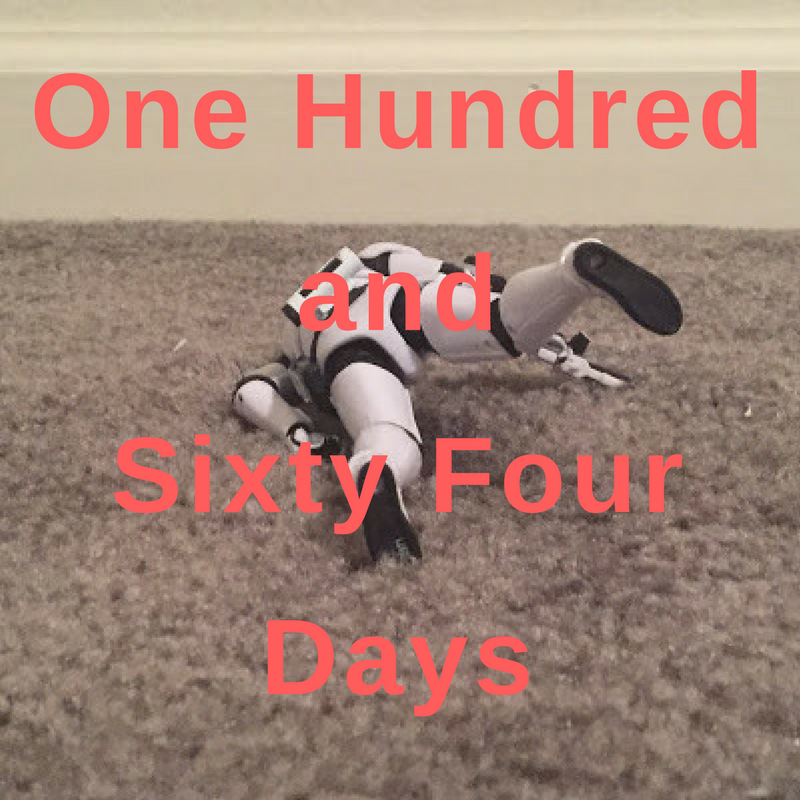Finale
Parts 1, 2, 3, 4, 5
Every so often I find myself wondering just why I do it -- this blog, that is. Whereas many other blogs seem to have specific purposes and recognizably distinct perspectives, I always feel slightly purposeless next to more rigorously defined sites. Ultimately, however, it has little to do with a useless question like "what do readers get out of this site"? Obviously they (you) get something from me doing this, or you wouldn't be reading this right now. To doubt that there is an audience at this point would be essentially fishing for pity. I make no bones about fishing for money, but I draw the line somewhere . . .
At some point blogging crosses over from a neat idea that sounds like it might be fun, and becomes a responsibility. It may not sound glamorous or fun, but there it is: at some point The Hurting became less an avocation than a compulsion. It's not that I do or don't enjoy it, it simply is, it's become a fixture in my life. Some people come to blogging for a short amount of time, and when the novelty wears off they wander away. Others find themselves sucked in. I feel guilty when I go more than a day without posting something, because I know at least a few people care. I notice when I take long sabbaticals (as has happened when I have taken breaks for trips and the like) that the readership goes down. I don't scan my stats or anything like that, but you notice these things in terms of the comments and kind of responses you get. Of all the writing I have to do in my life, writing a blog post is perhaps the least effective use of my writing time conceivable, considering that I don't get paid for this, I'm not building connections that can help further my "real" writing career, and oftentimes writing involved blogposts is just a way of getting sidetracked from other things I need to be doing at any given moment. I can trick myself into feeling I've gotten something accomplished when, really, I've just wrote a blogpost, maybe even a spectacularly stupid piece of fanfic using Iron Man as a metaphor for creative achievement (what can I say -- it was a good metaphor that I don't think anyone had ever used before).
Does that sound bad? Really, it's merely true. I've gotten a handful of e-mails since this series began, asking me if the "Fate of the Critic" series was going to mean the end of The Hurting. While it is indeed flattering to see that at least a couple people care, it's not the end.
Reading Eddie Campbell's The Fate of the Artist, I identified with Campbell's character perhaps more than I should have. I'm a single white male, newly divorced, with some degree of independence but still essentially frustrated in my chosen field (writing). It's easy to wake up one day and realize the grinding sensation you feel is the sound of the ignition grinding as the car stalls in the middle of traffic. Forward momentum ceases and you start sliding sideways -- not backwards, but not one inch closer to your ultimate goal.
And you get comfortable. You live by yourself. You get to build and design your life just exactly how you want it. You look up one day and realize that you've become "eccentric", and that you're talking to yourself in the grocery store. When you go out to visit family for a week it is amazing just how harsh and acerbic your voice sounds, because you haven't been using it an awful lot. You get a cat, so you can pretend you're talking to someone without sounding totally crazy. And you write in the second person, just like Don McGregor, to somehow try and depersonalize what is, essentially, your story.
Because that's what this is all about. I recognize the fact that The Hurting has something of a schizoid reputation -- on the one hand, the reviews and think-pieces are often stridently impersonal for the blog format. Not without reason do I strive for a formality of tone in my longer pieces. But then, the first person "I" invariably comes crashing in through the skylight. I don't think I wear it well, honestly. I'm more comfortable talking about myself in the second or third person. I believe that at its most basic form, blogging is a limited format. When I write reviews, I try to ground them in the same standards I would use writing for the Journal or Popmatters. I don't know why I do this, other than it seems more "natural" to me than not. All the same, I've become increasingly aware of the fact that my voice -- or a voice which somehow approximates mine -- shines through.
It's not a diary, it's not a journal, it's not a magazine, it's not an academic review, it's not a brand name, it's not profitable. It's simply The Hurting. It is what it is. Trying to define it further, at this point, is just counter-productive.
It's the fate of the artist to create art. I honestly don't know why critics do what they do -- even after I've been one for years, even after I've been paid for it, I still don't know. I suspect most of us just spend so much time thinking that critiquing is essentially second-nature. I know that when I'm really feeling spot-on, a review is a kind of automatic writing, spewing forth what has already percolated in my head onto the keyboard. Sometimes I fear that my work seems dashed-off, or worse, lacking in rigor -- how many times have I made contentious points, only to see them demolished on further examination? That comes from thinking out loud. It's good to have a blog on which to do so, but I still worry sometimes that I come across as insufficiently substantial. That, more than anything else, is probably the fate of the critic: perpetual insecurity.
Because you can't criticize other people's work without coming in for criticism yourself. Perhaps there are certain critics who reside in an ivory tower of insoluble perfection, but I always worry that every decision I make regarding how I perceive art is somehow contradictory, insupportable, arbitrary or just plain uninformed. There's always someone smarter.
And at the end of the day, no matter how good my melting gun is, I'm not going to be able to succeed in melting Iron Man. He'll always find a way to clobber me and win the day. As important as it is to discuss art, to understand our relationship with art and the way we perceive art, the people who actually create art will always retain the moral high ground. Some criticism becomes art by virtue of its heft, but most is, at best, of supplementary value. No matter how good a piece of criticism is, it only exists because someone, somewhere, took the first step to create something new in the first place, something which the critic could then respond to and hold a dialogue with. Ultimately, criticism is futile -- truly great art will always resist explication. And an artist will continue on his or her merry way, regardless of how many idiots with melting guns are lined up outside the gate.
So we sit and we talk and we explicate and we explain and we develop these little alternative cosmologies to try and explain how things work, when in reality it's all so much more complicated and yet so much more simpler than any critic could ever explain. The act of creation is ineffable and mysterious. And at the same time, the act of reading or viewing or listening is so simple, one gets the idea that sometimes critics can lose sight of just how basic the act is. We learn how to judge art, and how to apply criteria and utilize informed comparisons, but really, it's all just a development of the same aesthetic sense we develop from a very young age. And the best art, the truly great art, can succeed in transporting us back to the very genesis of our critical faculties. We can talk all day about why it is good, but ultimately, attempts to explicate the inexplicable will fall mercilessly short.
I can't really pretend to understand why anyone else does anything, but I know for me that trying to understand art through criticism is done with an extremely specific purpose. I can't learn to be inspired but I can learn how to apply craft to inspiration. For me, at least, the fate of the critic is to take what I have learned and apply it. Of course, when you become adept at disassembling other people's art, you are liable to become a merciless critic of your own work. But then, no one ever said being an artist was easy or fun -- good old Tolstoy spent decades in the second half of his life wandering around the woods of his estate with a rifle, trying to think of a good reason not to kill himself. That's your "fate of the artist", right there. We'll see how it goes.














